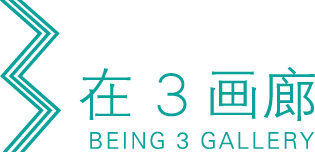

策展人:
棉布
艺术家:
蔡东东
戴陈连
杜雨青
贺勋
何迟
韩五洲
康学儒
邱飞
李芃澎
伍伟
肖武聪
闫冰
Curator(s):
Mian Bu
Artist(s):
Cai Dongdong
Dai Chenlian
Du Yuqing
He Xun
He Chi
Han Wuzhou
Kang Xueru
Qiu Fei
Li Pengpeng
Wu Wei
Xiao Wucong
Yan Bing
THIS IS WHY WE PLAY THIS IS WHY WE PLAY
前 言
作者:棉布 翻译:徐化宁
在3画廊教堂空间荣幸地邀请年轻的艺术家群体,举行THIS IS WHY WE PLAY的群展,这一表达,来自于在3画廊关于当代艺术实验维度的敞开,对年轻艺术家的关注,以及黑桥艺术区周边活跃的青年艺术家之间,深入广泛的交流、探索,所达成。
这是一个真正意义上"自我组织"的展览,就是通过艺术家来选择艺术家的展览。对于包罗万象的当代艺术来说,这样的方式并不新鲜也不刺激,因为"自我组织"早已成为现代主义以来的艺术传统,历史上的每一次风起云涌的艺术运动无不是从"自我组织"开始的。正是这种不断出现的自我组织,昭示了当代艺术最为本质的特征,即当代艺术是一种只为艺术家存在的艺术。进一步说,这句话包含了两个方面的内容,首先是艺术家不受任何干扰只为自己的艺术负责;其次,这种不同于以往不流俗的艺术往往只能被少数艺术家所理解和认可。
个人性,或许是本次展览的特质,这很像一个人写字,有不同的笔法:每个艺术家来自不同的教育文化背景,关注的事物,视角,观念,社会问题,都各不相同,每个人作品的背后都有各自强大成熟的学术逻辑系统,之所以能够组成一个有机的展览,其源于“当代”这个词,这个语境。当下艺术家都是独立在各自的语境中创作,这种语境可能是艺术外部的(如社会、政治、日程生活、自身经历等),也许是艺术内部的(如形式、结构、笔法、图像等),正是这些语境决定了艺术家如何展开自己的工作,如果要对艺术家的创作做出判断就得具备同样的语境或者能体悟到这个语境的人才能理解:蔡东东持续他以往的看与被看;戴陈连则以诗性无形的声音动作持续着他的剧场探索;杜雨青用影像荒诞地假装一本正经地剖析诗歌与当代艺术;贺勋在展览的教堂空间察觉到诗的发生与隐匿,并试图以诗来理解诗;何迟很难界定,他用他一如既往特有的方式参加这个展览,迟疑却克制的情绪始终伴随;韩五洲的装置作品用日常物的嬗变在空间载体中呈现趣味性;康学儒持续了借诗意而浪漫的现成物表达;邱飞悬空的综合材料绘画《云》暗含了关于虚无、空洞、悲情、荒诞等一系列形而上的精神存在;李芃澎把文玩崖柏非理性地嫁接成鞭子这样的刑具,事物在丧失原有性之后让我们看到了新的可能性;伍伟则以一个独立空间为媒介,完整的表达了他对于物质形态的转喻,以及精神层面的角落之地的探索;肖武聪陈述着他所关注的当代艺术历史,从架上到文本,同时又成立为整件作品;闫冰基于灵感和友情,以正发生的朋友艺术家的骨折作为媒介,展出。等等。所以,这个展览也是希望通过艺术家的个人工作方式展示自己的创作语境。同时通过艺术家之间的相互理解和判断,呈现当下某种共同的东西。
艺术家之间、艺术家与画廊主之间的对谈,则成为贯穿整个展览的非物质形态和非常有机的整体气质,不仅仅是展览的文献组成,更是展览的难以定义的一部分。
在3画廊教堂的先锋实验维度,从德国艺术家Burkhard的16个小时的文献电影,到艾未未长达200多个小时的纪录片,年轻艺术家杨威充满温和的挑衅的空间实验项目,再到雎安奇的17分钟的文献电影,一直在铺陈先锋实验的道路和在3画廊对于未来的态度。2016年,在3画廊全年展览主题为:超基因,而这一群展达到了高度的精神契合以及更多的可能性。
Preface
by Mian Bu translate Xu Huaning
Being 3 Gallery is honored to have the participation of this group of young artists for the exhibition This is Why We Play. The phrase refers to the expanded scope of contemporary artistic experimentation presented at the gallery, the attention it is giving to young artists, and the thorough and diverse exchanges and explorations taking place among young artists active in the nearby Heiqiao art district of Beijing.
In a true sense, this is a “self-organized” exhibition, in the way that artists have selected each other for this exhibition. For the contemporary art scene, with its often inclusive approach, such a system of organizing is neither new nor unusual: “self-organizing” has been a common occurrence in the visual arts since the beginning of modernism. Nearly every influential art movement was initiated through this process. It is this continuous self-organizing that defines the nature of contemporary art, i.e.,this form of contemporary art is a type of art that exists for theartists. This statement carries two meanings: firstly, only artists are responsible for their art despite other influences; secondly, this kind of art is usually only received and understood by a minority of artists, since it is not based on popular tastes.
Individuality, perhaps, is the defining characteristic of this exhibition. In the same way that each person’s calligraphic style isdifferent, each artist here draws from a unique educational and cultural background: the things, perspectives, concepts, and social issues they pay attention to are diverse. Yet, behind every work there is a theoretically informed foundation that is strong and mature. The reason we are able to organize an exhibition in such an organic manner is because of the “contemporary”context. Contemporary artists make work based on their own context, which might refer to things external to art, such as society, politics, everyday life, and personal experiences, or to things internal to art, such as forms, structures,techniques, and images. It is these varied contexts that determine how artists work. If we want to fully appreciate an artist’s work, we need to place ourselves in the same context or understand that context: Cai Dongdong continues his program on seeing and being seen; Dai Chenlian maintains his exploration of the art of theatre through poetic but shapeless singing; using the medium of video, Du Yuqing pretends to analyze poems and contemporary art to create a sense of the absurd; He Xun situates his work in the church-like space of the gallery and discovers where poems come from and where they are going. It is hard to define He Chi: he has his own style which is insisted upon in this exhibition; the installation work by Han Wuzhou uses the ever-changingcharacter of everyday objects to highlight their fascinating qualities inspace; Kang Xueru continues to use ready-mades to create poetic expressions thatare romantic and academic at the same time; and Qiu Fei‘s suspended woodprint Dark Cloud considers metaphysical and spiritual existence through the themes of nothingness, emptiness, sadness, and absurdity. Li Pengpeng has irrationally grafted collectable arborvitae into instruments of punishment; Xiao Wucong expresses his passion for contemporary art with elements ranging from easel paintings to texts that simultaneously constitute a complete work of art; Yan Bing has based his work on inspirations and friendships, regarding his friends’ bone fractures as a source for new work,and so on. In one word, this exhibition intends to show the “context” for the artists’practices through their individualized ways of working, while at the same time,through the mutual understanding among the artists, reveal the points they have in common with each other.
The interviews of participating artists and the gallery owner, which features Wu Wei as the primary interviewee, highlight the intangible logic that runs through the exhibition as a whole and contributes to the organic atmosphere of the exhibition. It includes archival materials,which is the most difficult part of the exhibition to define.
The avant-garde experimental nature of Being3 Gallery’s programs encompasses the 16-hour documentary film by German artist Burkhard Von Harder, Ai Weiwei’s 200 hours of documentaries, the gentle but provocative spatial experiments by the young artist Yang Wei, and the 17-minutedocumentary film by Ju Anqi: these workshave consistently forged a path for avant-garde experimentation at the gallery,and help to chart its course for the future. In 2016, the theme for Being 3 Gallery’s annual exhibition series is “Supergene,” with this specific group exhibition reachinga high level of spiritual affinity that opens up the possibility for much more.